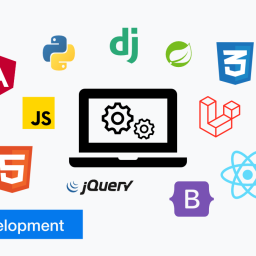
Software Development Methodology in pondicherry Software Development Methodology in pondicherry
Selecting the appropriate software development methodology is a critical decision that can significantly impact the success of a project. LeMeniz, a leader in software solutions, recognizes the importance of aligning the development approach with project goals and team dynamics. In this guide, we’ll explore LeMeniz’s tips for choosing the right software development methodology.
Understanding Software Development Methodologies:
Software development methodologies are systematic approaches to organizing, planning, and controlling the process of developing information systems. There are various methodologies, each with its unique principles, practices, and strengths. The choice of methodology depends on factors such as project size, complexity, timeline, and team structure.
LeMeniz’s Tips for Choosing the Right Methodology:
- Project Requirements and Goals:LeMeniz emphasizes the need to start with a clear understanding of project requirements and goals. Different methodologies suit different types of projects. For instance, agile methodologies are well-suited for projects with evolving requirements, while waterfall may be appropriate for well-defined, stable projects.
- Project Size and Complexity:Consider the size and complexity of the project. LeMeniz suggests that smaller, less complex projects may benefit from lightweight, agile methodologies, while larger, complex projects might require more structured approaches like the waterfall or V-model.
- Flexibility and Adaptability:Assess the level of flexibility and adaptability required. Agile methodologies, such as Scrum or Kanban, provide a high degree of adaptability to changing requirements during the development process. If flexibility is crucial, LeMeniz recommends exploring agile options.
- Team Structure and Dynamics:LeMeniz acknowledges that the dynamics of the development team play a vital role. Cross-functional and collaborative teams often align well with agile methodologies, fostering regular communication and collaboration. Traditional methodologies like waterfall may be suitable for more hierarchical team structures.
- Client Involvement:Consider the level of client involvement and feedback required throughout the development process. LeMeniz notes that agile methodologies, with their iterative nature, often involve more client collaboration, ensuring that the final product closely aligns with client expectations.
- Risk Tolerance:Evaluate the project’s risk tolerance. If the project can accommodate changes and adjustments as it progresses, an agile approach may be favorable. For projects where changes could introduce significant risks, a more structured methodology might be preferable.
- Timeline and Milestones:LeMeniz advises considering the project timeline and milestones. Agile methodologies typically deliver smaller, incremental releases, allowing for more frequent milestones. Traditional methodologies like the waterfall may have longer development cycles with milestones at distinct phases.
- Regulatory Compliance:Some industries, such as healthcare or finance, have stringent regulatory requirements. LeMeniz suggests that methodologies with a focus on documentation and strict phase reviews, like the waterfall or V-model, may be better suited for projects with high regulatory compliance needs.
- Budget Constraints:Assess budget constraints and financial considerations. LeMeniz notes that agile methodologies often provide more cost-effective solutions, especially for projects where changes are expected. Traditional methodologies may have higher up-front costs but can be more predictable in terms of budget.
- Previous Project Success:Reflect on the success of previous projects with specific methodologies. LeMeniz recommends leveraging past experiences to identify which methodologies have proven effective for similar project scopes and requirements.
Conclusion:
Choosing the right software development methodology is a nuanced decision that requires a careful evaluation of project characteristics, team dynamics, and client expectations. LeMeniz’s tips underscore the need for a thoughtful analysis of factors such as project size, flexibility, team structure, and risk tolerance. By aligning the chosen methodology with the unique aspects of the project, organizations can set the foundation for successful software development endeavors.
















